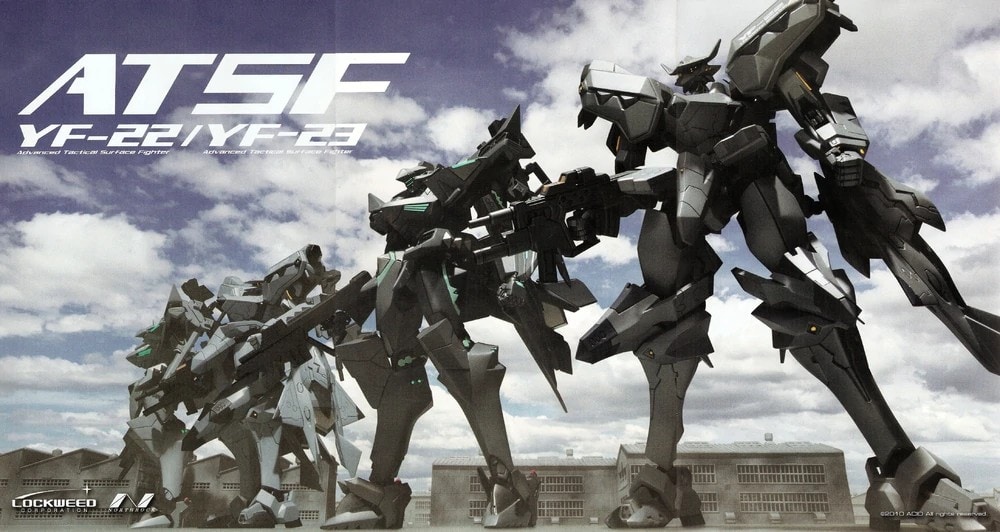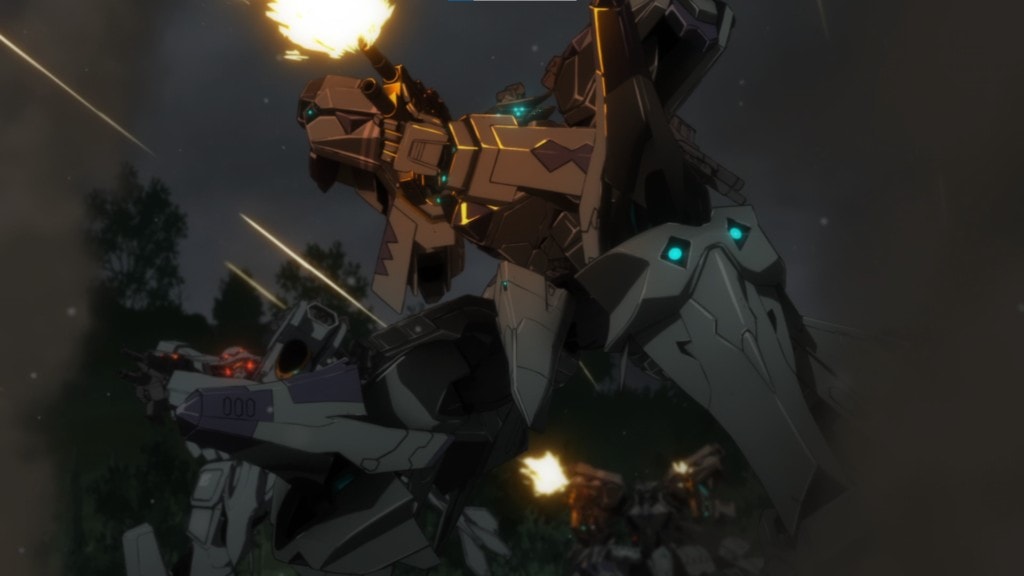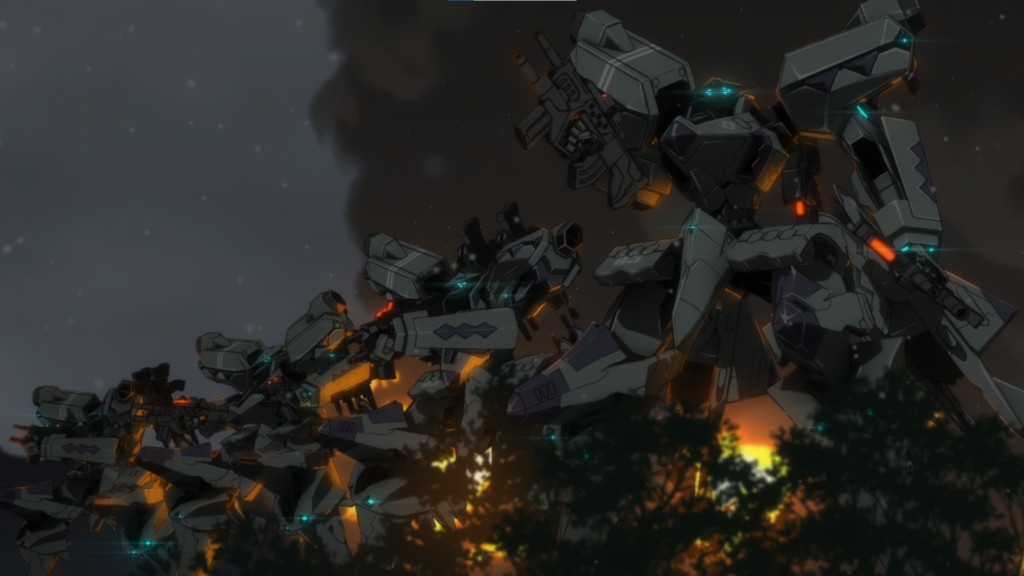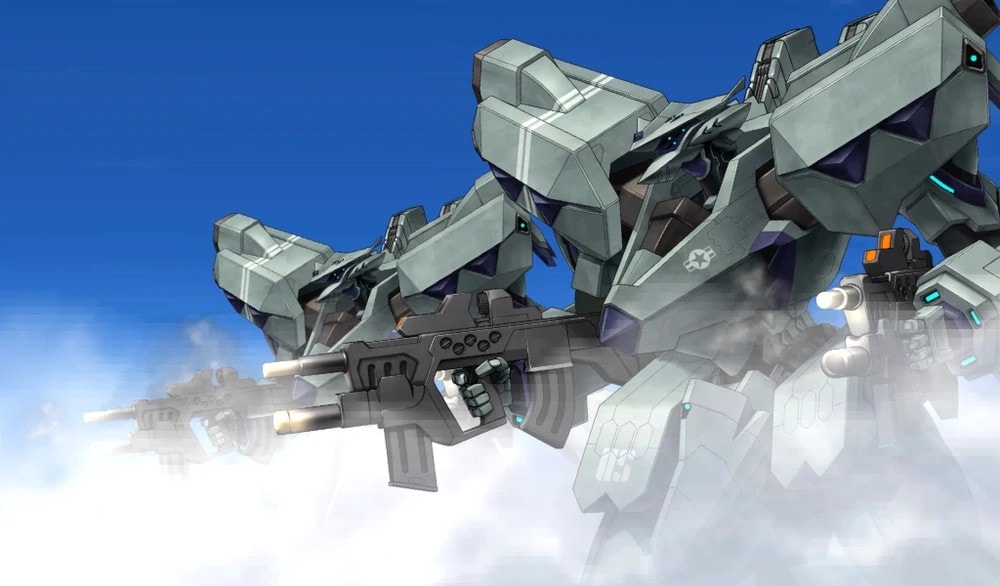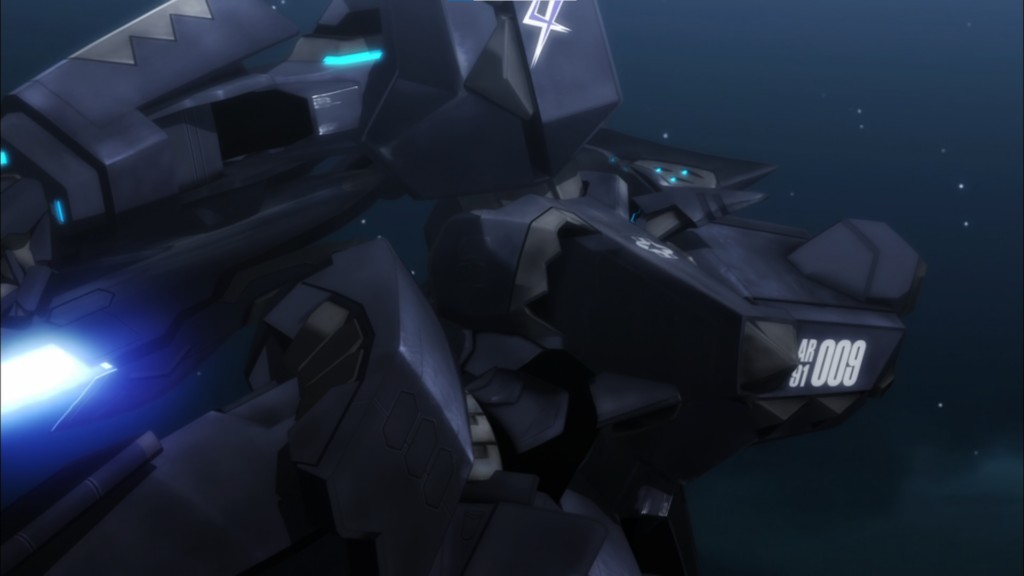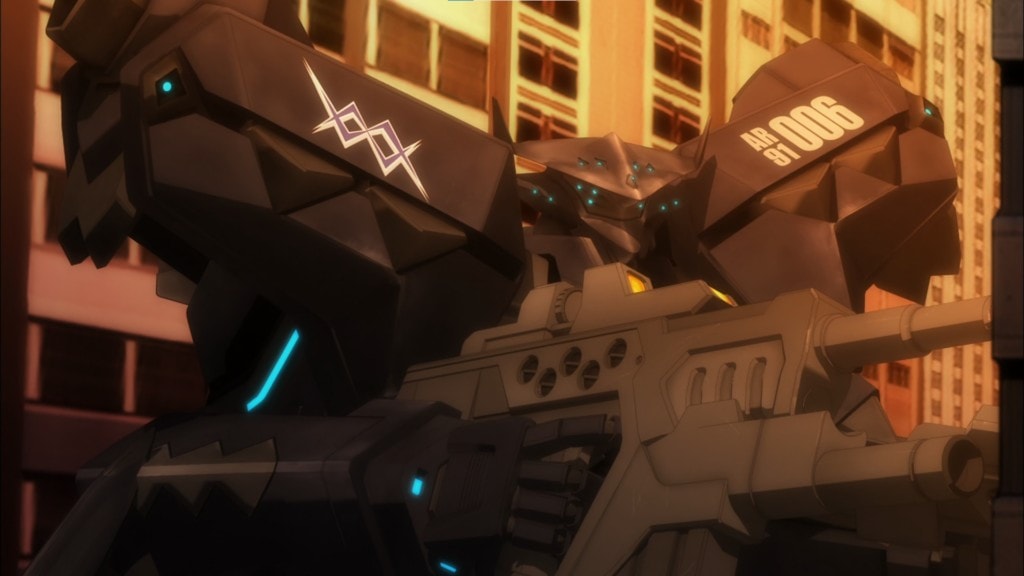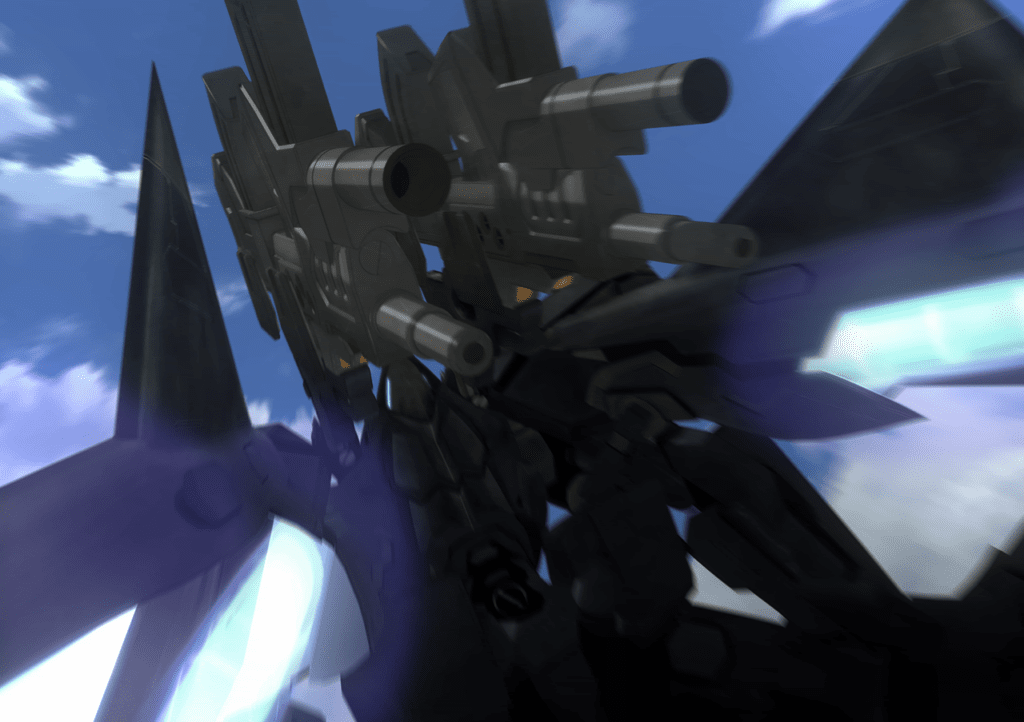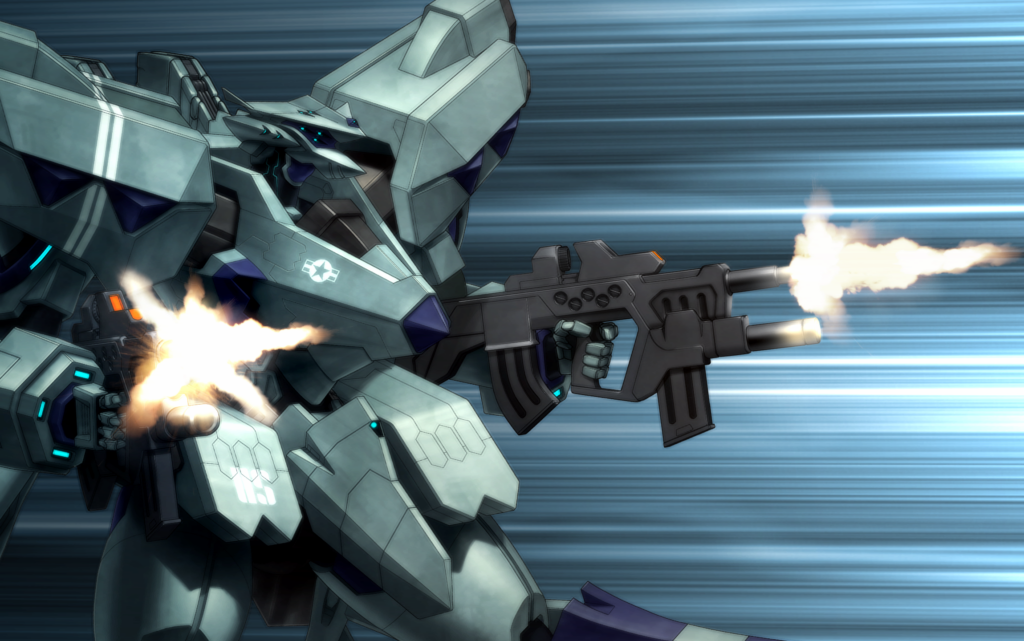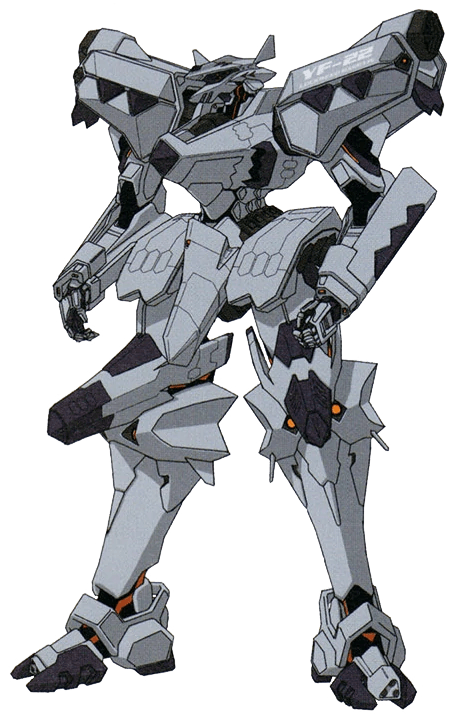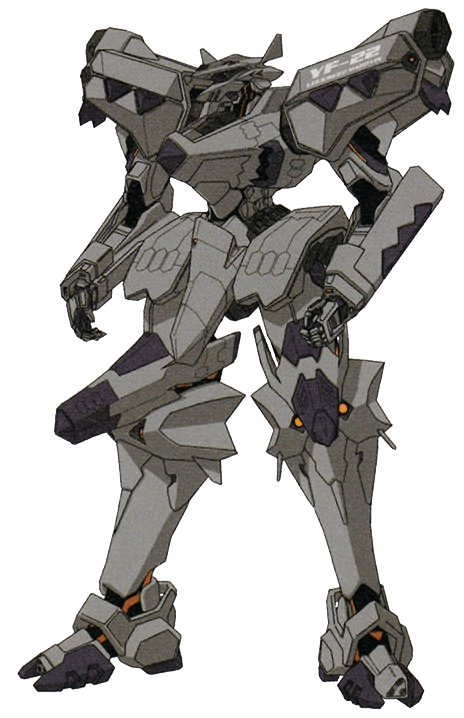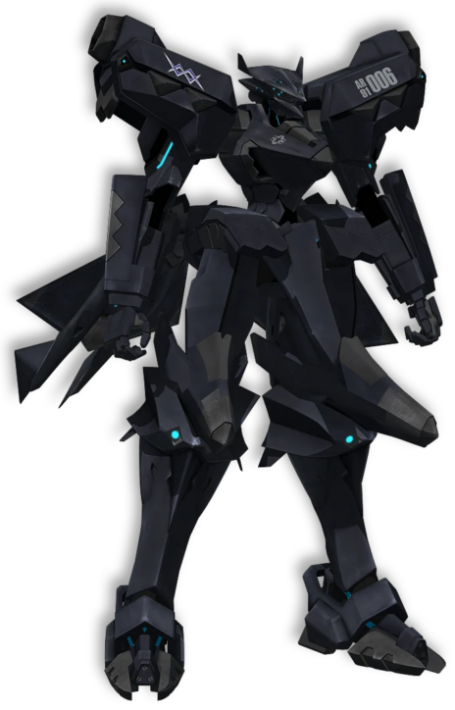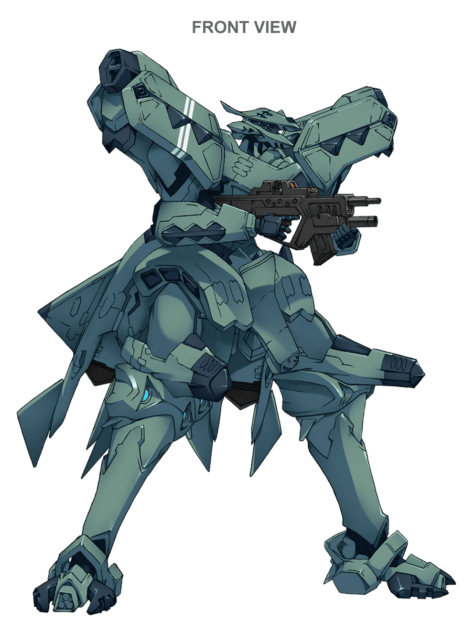
Mecha Profile: F-22A RAPTOR – Muv-Luv Alternative
A country must prioritise its interest above all else – and that holds especially true for the United States of America in Muv-Luv BETAverse. From economy to military power, the U.S is far above any other nation. With the highest number of active-service TSF in the whole world, the U.S is at the forefront of the TSF development industry. So it comes as no surprise that only they possess the strongest TSF on the battlefield: the F-22A Raptor.

I. Development History:
– Less than a decade since the first TSF was deployed on the battlefield against the BETA, the U.S had finished developing the 2nd-Generation and readied them for deployment. The “Father of TSF” – Lieutenant General Lloyd Vandenberg predicted that the war with the BETA will soon end when the 2nd-Gen TSF reach their shelf life. Furthermore, he stated that the U.S needed “a force to take on the final stages of the Great BETA War that would also demonstrate adequate supriority against other, more conventional armed forces, even after its conclusion”. In short, he believed that the U.S need to be capable to fight off the BETA, as well as human forces, in this case, TSFs and conventional army.
– With that, the U.S Army submitted the ATSF Program (Advance Tactical Surface Fighter) for a new generation of TSF. Other than the usual anti-BETA capabilities, the new features required of the next-gen craft included:
> The ability to engage in combat with existing man-made weapon, including TSFs (anti-human ability)
> An advance first-look, first-kill ability (detect the enemy first and finish the enemy unit before they can do anything)
> Stealth abilities from electronic equipment to reduce detectability.
> High speed cruising with low fuel consumption and long distance flight
– With these proposed specs, Lockweed’s concept for the YF-22 and Northrock’s YF-23 was approved by the US Army. Both craft entered a race to determine the fate of each company since the G-bomb detonation experiment was successful, which signal a drastic change in the US’ anti-BETA doctrine. Initially, the YF-23 had been leading the trials, but the YF-22 caught up in the middle stages due to it being closer to a completed practical TSF. The final stages – the mock combat trial – resulted in favor of the YF-23 Black Widow with 18 wins, 14 losses, 5 draws and 3 uncounted matches against the YF-22.
– Although the YF-23 got better result in the trials, the US Army ultimately decided on the YF-22 as their next mainline TSF. Even Lockweed was surprised with this victory, and the company’s financial situation was saved. Following suit, full-scale development of the F-22 began. Although the F-22A was hit by many delays, and was only able to commence deployment in March 2001 with the first 4 units assigned to Langley, Virginia Army Base, the Raptors still hold superiority in all aspects over every other TSF as of 2001, even though others started development later and deployed earlier. It was deemed the strongest TSF and crowned as “The Battlefield Dominating TSF”.
– Less than a decade since the first TSF was deployed on the battlefield against the BETA, the U.S had finished developing the 2nd-Generation and readied them for deployment. The “Father of TSF” – Lieutenant General Lloyd Vandenberg predicted that the war with the BETA will soon end when the 2nd-Gen TSF reach their shelf life. Furthermore, he stated that the U.S needed “a force to take on the final stages of the Great BETA War that would also demonstrate adequate supriority against other, more conventional armed forces, even after its conclusion”. In short, he believed that the U.S need to be capable to fight off the BETA, as well as human forces, in this case, TSFs and conventional army.
– With that, the U.S Army submitted the ATSF Program (Advance Tactical Surface Fighter) for a new generation of TSF. Other than the usual anti-BETA capabilities, the new features required of the next-gen craft included:
> The ability to engage in combat with existing man-made weapon, including TSFs (anti-human ability)
> An advance first-look, first-kill ability (detect the enemy first and finish the enemy unit before they can do anything)
> Stealth abilities from electronic equipment to reduce detectability.
> High speed cruising with low fuel consumption and long distance flight
– With these proposed specs, Lockweed’s concept for the YF-22 and Northrock’s YF-23 was approved by the US Army. Both craft entered a race to determine the fate of each company since the G-bomb detonation experiment was successful, which signal a drastic change in the US’ anti-BETA doctrine. Initially, the YF-23 had been leading the trials, but the YF-22 caught up in the middle stages due to it being closer to a completed practical TSF. The final stages – the mock combat trial – resulted in favor of the YF-23 Black Widow with 18 wins, 14 losses, 5 draws and 3 uncounted matches against the YF-22.
– Although the YF-23 got better result in the trials, the US Army ultimately decided on the YF-22 as their next mainline TSF. Even Lockweed was surprised with this victory, and the company’s financial situation was saved. Following suit, full-scale development of the F-22 began. Although the F-22A was hit by many delays, and was only able to commence deployment in March 2001 with the first 4 units assigned to Langley, Virginia Army Base, the Raptors still hold superiority in all aspects over every other TSF as of 2001, even though others started development later and deployed earlier. It was deemed the strongest TSF and crowned as “The Battlefield Dominating TSF”.

II. Technical Specs & Armaments:
– The F-22A Raptor stands at 19.6 meter, and utilizes a whole new Jump Unit (which also got delayed during development) – the FE119-PW-100. With the newly established concepts and standard specifications such as Operation by Light, its overall anti-BETA capabilities are much higher than other 2nd-Gen TSF, with a focus on long-range bombardment. With the U.S switching over to using G-Bomb to destroy the Hive and using TSF to mop-up remaining BETAs, the F-22As are perfect for the role.
– But that’s not the only focus of the Raptor, as outlined by the ATSF program, the F-22A boasts advance stealth capabilities. The craft is coated in a cutting-edge, dark green paint which absorb electronic waves to elude radar. It also has countermeasures against infrared detection by eliminating waste heat. And a “silent mode” while walking to dampen vibrations and avoid detection by seismic and acoustic sensors.
– Aside from their passive stealth capabilities, the Raptor takes it to another level with their active jamming. The F-22 has an active jammer using the same integrated electronic warfare system on dedicated electronic warfare units. They can blind enemy TSF’s sensors and maneuver into their blind spots with ease.
– The Raptor uses the AMWS-21 (Advance Multiple Weapon System-21) for its Assault Cannon. The weapon consist of a standard 36mm autocannon and 120mm smoothbore attachment like others. It also includes a laser targeting device that transmit distance information to the fire control system. In order to reduce weight and maximize mobility, a Raptor unit usually only carries 2 Assault Cannons, which doesn’t fit into any usual loadout which utilizes all Mount Pylons. For melee, it uses 2 of the CIWS-1B (Close-In Weapon System-1 B-Type) which resembles a folding knife. The knives are stored on the knee compartment.
III. Variation:
The U.S operate with maximum efficiency so the Raptor do not have a variation, but rather different stages of development. After a few iterations, they refined the F-22 to an efficient mass-production model from the initial concept craft.
– YF-22 N22YX (Trial Craft 1): One of the two first prototypes made for the ATSF program. Manufactured by Lockweed with assistance from General Dynomics and Beoning. The initial unofficial nickname was “Lightning”. This craft uses the YFE119-PW-100 Jump Unit.
– YF-22 N22YF (Trial Craft 2): The 2nd prototype of the YF-22 for the ATSF program. This craft uses the YFE120-PW-100 Jump Unit.
– F-22A Raptor-EMD Phase 2: The models produced during the advance mass-production stage (EMD stands for Engineering and Manufacturing Development) between 1994 and 1997. 9 units were produced to test the airframe’s strength and avionics, as well as electronic weapons and firearms. All flaws found on the prototype YF-22 have all been rectified.
– F-22A Raptor: The HRP (High-rate Production) model of the Raptor. The final refined version and the TSF that went into full production and combat deployment as the U.S main 3rd-Gen TSF. As well as “The Most Powerful TSF”.
– YF-22 N22YF (Trial Craft 2): The 2nd prototype of the YF-22 for the ATSF program. This craft uses the YFE120-PW-100 Jump Unit.
– F-22A Raptor-EMD Phase 2: The models produced during the advance mass-production stage (EMD stands for Engineering and Manufacturing Development) between 1994 and 1997. 9 units were produced to test the airframe’s strength and avionics, as well as electronic weapons and firearms. All flaws found on the prototype YF-22 have all been rectified.
– F-22A Raptor: The HRP (High-rate Production) model of the Raptor. The final refined version and the TSF that went into full production and combat deployment as the U.S main 3rd-Gen TSF. As well as “The Most Powerful TSF”.
IV. Trivia:
– The F-22A Raptor displayed its overwhelming strength by beating a squadron of fully-armed 8 F-15E Strike Eagle “Aggressors” with only 2 units using knives.
– The Raptor also fought the F-16 and F-18 over 100 times and never suffered any losses.
– The Raptor is the only TSF with a “multiple-eye” config, with technically 13 on its head.
– Its development and manufactured was riddled with delays and budget cuts, such as the main engine for the Jump Unit, reduced budget that forced Lockweed to merge with Mardin. However, it still managed to dominate the battlefield.
V. Gallery:
– The F-22A Raptor displayed its overwhelming strength by beating a squadron of fully-armed 8 F-15E Strike Eagle “Aggressors” with only 2 units using knives.
– The Raptor also fought the F-16 and F-18 over 100 times and never suffered any losses.
– The Raptor is the only TSF with a “multiple-eye” config, with technically 13 on its head.
– Its development and manufactured was riddled with delays and budget cuts, such as the main engine for the Jump Unit, reduced budget that forced Lockweed to merge with Mardin. However, it still managed to dominate the battlefield.
V. Gallery:
